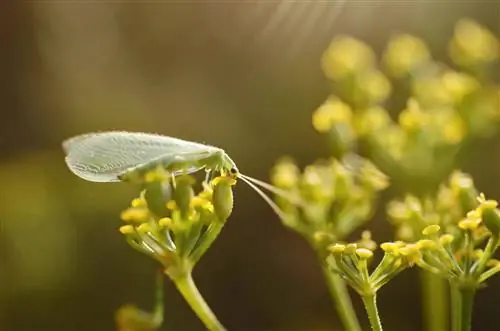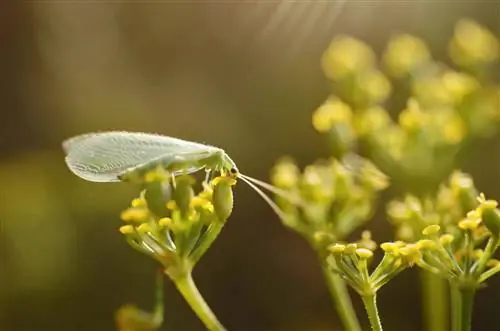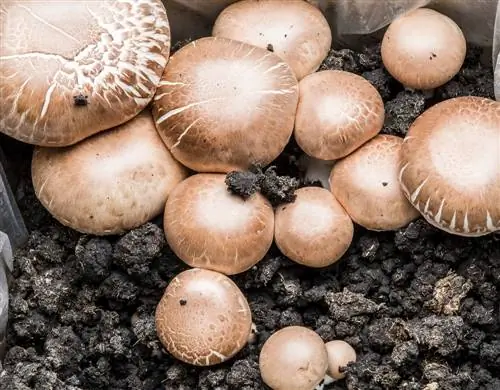- Author admin [email protected].
- Public 2023-12-16 16:46.
- Last modified 2025-01-23 11:22.
Lacewings and their larvae are among the biggest enemies of aphids. It therefore makes sense to attract and settle as many of the delicate creatures as possible in order to successfully keep the voracious plant suckers at bay. We'll show you how to do this in this guide.

How can I attract lacewings?
lacewings (Chrysoperla carnea)are magnetically attracted tocatnip planted in the garden. A fragrance called nepetalactone, which is very similar to the sexual substance of insects, is responsible for this. Many insect-friendly plants or a piece of wildflower meadow are also attractive.
Which plants help attract lacewings?
Since the adult lacewings feed exclusively on pollen, nectar and honeydew, the animals prefernectar- and pollen-rich flowering plants. For example, the following are very popular:
- Dog rose,
- Marigold,
- Yarrow,
- Thistles,
- Poppies,
- Buckwheat,
- Thmyme,
- the flowering age form of ivy.
It is also important that the graceful winged animals find food throughout the entire gardening season. This is taken into account by a diversely planted, natural garden in which no pesticides are used.
How can I introduce lacewings?
Offer the animals a red-paintedwooden hibernation box. With a little craftsmanship you can easily build the aphid hunter's home yourself or buy it commercially.
- Fill the lacewings' new home with wheat straw.
- Hang it at a height of 1.5 to 2 meters so that the narrow openings in the front face away from the wind.
- There should be nectar-rich autumn bloomers nearby, such as ivy.
Tip
Use lacewings against aphids
If your plants are suffering acutely from an aphid infestation, you have the option of purchasing lacewing larvae from specialist retailers or online. The aphid lions arrive at you as eggs, in cardboard honeycombs or on a food substrate and can be applied directly to the affected plants.






